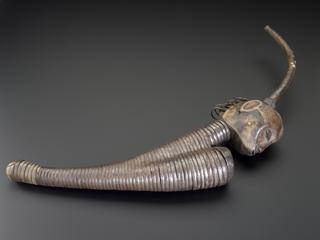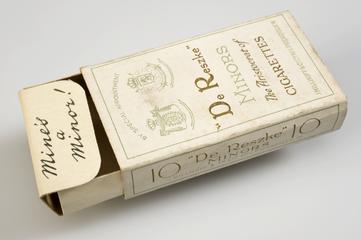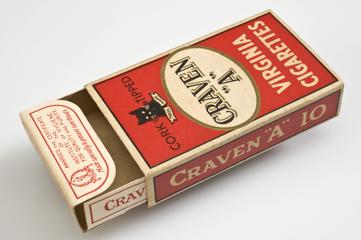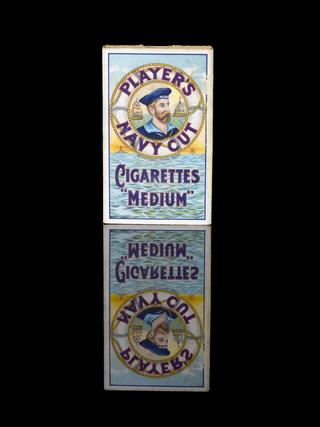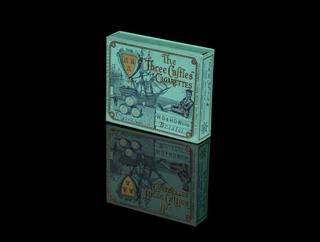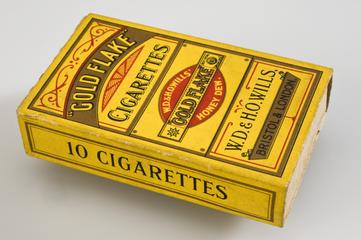




Box containing 3 complete churchwarden pipes, 2 bowls and several pieces of stem, by William Southorn and Co., Broseley, Salop, 1880-1910
Churchwarden clay pipes are characterised by an extremely long stem; this example measures 500 mm in length. The pipe was made by William Southorn & Co, a tobacco pipe maker based in Broseley, Shropshire, England. Such a pipe was well suited to a leisure-time smoke, rather than when working. Clay pipes could quite easily break so a shorter pipe was more appropriate for the workplace.
Founded in the 1830s, the company won prizes for their work and continued making tobacco pipes until the 1950s. Their factory is now part of the Ironbridge Gorge Museum in Shropshire.
Details
- Category:
- Smoking
- Object Number:
- 1987-860
- Materials:
- box, cardboard and pipes, ceramic, china clay
- Measurements:
-
overall: 75 mm x 710 mm x 95 mm,
largest pipe: 525 mm x 70 mm,
- type:
- churchwarden pipe
- credit:
- Victoria & Albert Museum
